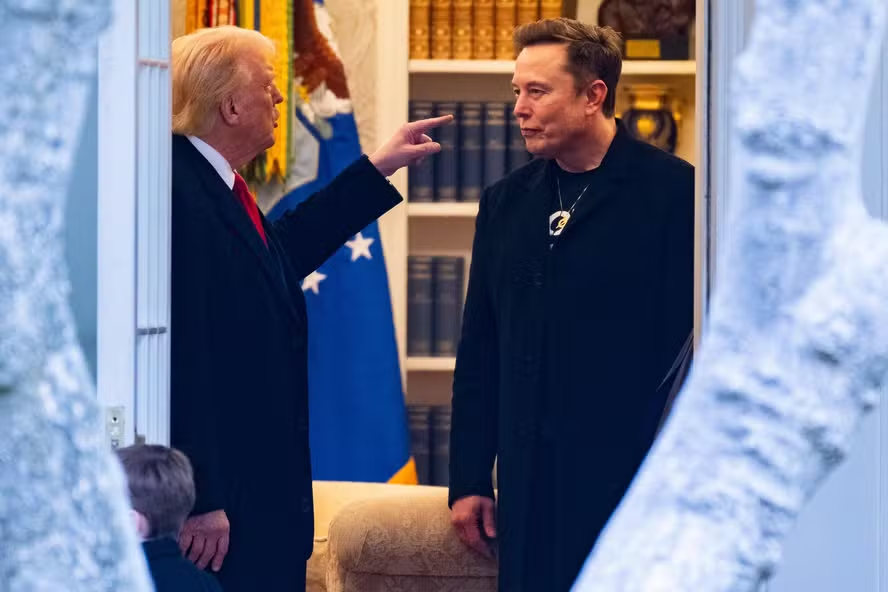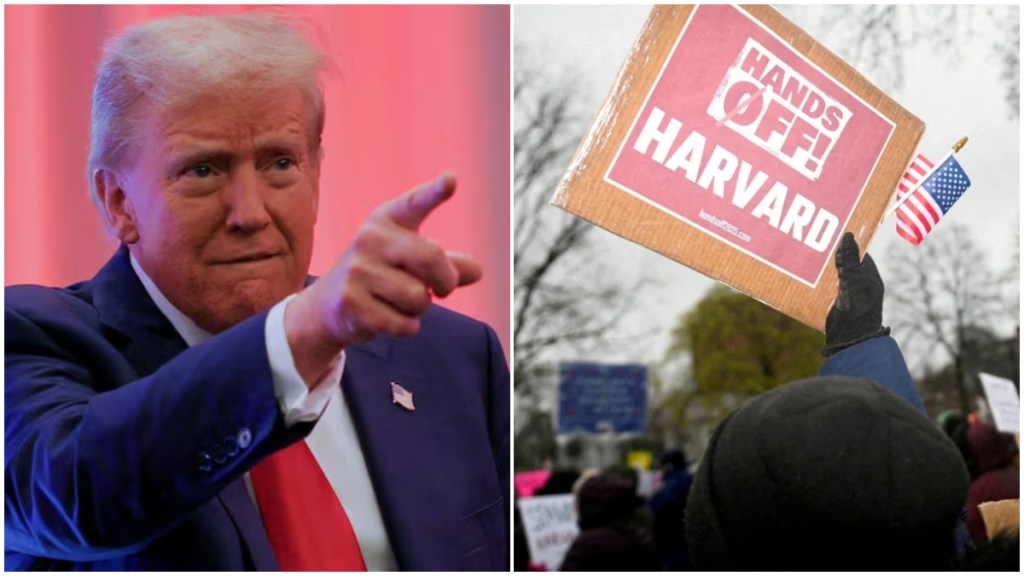Times are changing, but that’s no news. A question remains on how European leaders will respond to those changes. The historic reelection of Donald J. Trump to the White House marks another important moment of the Zeitenwende Europe must face. Hence, we can look at 2022, with the invasion of Ukraine by Russia, as a watershed for the European continent and to the world – to an extent.
First things first
Trump was elected twice with the slogan ‘Make America Great Again’ (MAGA), vouching to put America First. This position, however, differs from the tradition developed after World War II and cemented after the end of the Cold War of American leadership in the international arena. Constantly referring to itself as leader of the free world, the US grew accustomed to a world shaped by its will. But being a Watchdog State comes with a cost – one that Trump doesn’t seem willing to bear. Therefore, both his previous and current administration seem more aligned with isolationism than with the modern tradition of the US foreign policy. Hence, how the United States sees itself matters immensely to its foreign policy.
That is because American Exceptionalism comes in many forms. To be fair, isolationism is a disputed term considering how interconnected economies are nowadays. There is a limit on how much a country can “isolate” itself in the international scenario. Fact remains that after Libya and the Afghanistan fiasco, just to name a few, the US seems less prone to get involved in matters of nation-building and promoting democracy through war.
So, unlike most presidents in the recent history of the US, Trump didn’t believe in starting or escalating conflicts around the world. This set a trend. Biden had to carry on the withdrawal from Afghanistan – however disastrous it turned out to be – that Trump signed. Nonetheless, he felt obliged to get more and more involved in Ukraine, and afterwards, in Gaza. It’s worth noticing that the US has not been directly involved in these latter conflicts. That is, the country doesn’t have troops in Ukraine. Still, the US is an interested party on the conflict’s outcome.
Not only because of the billions of dollars invested in the war, but because of how the outcome will be perceived. Is a loss of Ukrainian territory a loss for the US? If so, Russia will probably win, considering that that’s the most likely outcome given that Trump wants a quick end. Or is peace considered a win for America? If so, the sovereignty of Ukraine over its own territory will be the price – one that Trump seems more than willing to pay. As he himself declared on X regarding the war in Ukraine, “I don’t want advantages. I want peace”.
As Watling and Kofman (2025) highlight, Washington’s policy objective is to shift the burden onto European capitals. In fact, the White House has announced a pause to military aid to Ukraine this monday following the horror show at the Oval Office last week. In response, the Ukrainian president said he is ready to sign a minerals deal with the US in an attempt to revert the shifting on US foreign policy regarding this conflict. Also, the US has stopped Intelligence sharing with Ukraine.
So, can Ukraine continue only with the backing of its European partners? Possible, but unlikely considering that Europe still depends largely on the US to guarantee its security. And even if it continues, for how long can France, Poland, Germany or the UK support Ukraine? However sad this might be for Ukraine, its territorial integrity was never a big priority to the US nor to NATO. This was made clear to Russia in 2014, when Crimea was annexed and the West responded with economic sanctions. Still, should a peace deal be achieved, Europe is more than interested in providing Ukraine with guarantees to avoid another Russian invasion in the future. That is because, as the Ukrainian president, Volodymir Zelensky, noted at the Oval Office, Europe doesn’t have the luxury of an ocean between its borders and Russia.
Photo: Jabin Botsford/The Washington Post
Hence, countries like France and the UK are already discussing the possibility of getting troops down to Ukraine as a way of deterring future Russian aggression. Notwithstanding, such a plan presents a challenge in economic and manpower terms. Most importantly, it remains to be seen if Europe, especially Western Europe has the will to make it happen. As Watling and Kofman (2025) put it, the key point is whether they are prepared to underwrite the costs, considering that so far European leaders have not been prepared to match their rhetorical commitments with resources.
After the invasion of Ukraine, expanses with defense in Europe were bound to increase, but is Europe ready to man its own borders and act as peacekeepers in Ukraine? Trump’s message is clear: Europe has to do the hard work. European leaders seem to be getting it. Whilst they cannot afford to be without the US nuclear umbrella, they certainly understood that it’s no longer possible to rely solely – or even majorly – in the US. Still, the British Prime Minister, Sir Keir Starmer, told BBC, his “driving purpose” right now is to act as a “bridge” between Trump and Zelensky. Following Zelensky’s visit to European leaders over the last weekend, the Ukrainian president wrote an appeasement letter to the White House, one that was received with appreciation by Donald Trump, reports BBC.
Extended Nuclear Deterrence
Given that Ukraine was never that important commitment, because it was never a part of NATO, the fact that the US seems to be abandoning Ukraine is not a sign that NATO is coming to an end nor that it is necessarily weakened. Indeed, I don’t see a scenario in which NATO is abandoned all together. Surely not by the Europeans. As the president of the European Parliament, Roberta Metsola said: “Our transatlantic partnership remains vital”. And also, “NATO will always be the bedrock of our collective security”. But once again perceptions matter, therefore it’s important to understand how much trust Europe puts in the alliance. This is hugely significant to how they will proceed from now on. If it is perceived that the US no longer holds a strong commitment in relation to Europe, will nuclear proliferation take place? Either vertical or horizontal? Or will the US continue to be responsible for providing the nuclear umbrella?
Currently, the US is the only provider of the nuclear umbrella in the alliance. Countries like Germany bear the cost of hosting the US nuclear weapons and providing the vehicles to transport them (the American F-35) in a mechanism of nuclear sharing within the alliance. Countries like France and the UK also possess nuclear weapons, but a significantly smaller arsenal that is not part of NATO’s nuclear planning. Neither the UK nor France have chosen to maintain the nuclear triad. Therefore, they do not possess the capability to deliver their weapons by land, air and sea. Despite this, French President Emmanuel Macron has signaled his willingness to provide extended nuclear deterrence to Europe, which would require a rearmament in relation to its delivery vehicles. Furthermore, it is difficult to trust that the same willingness would be maintained with other French leaders, such as Marine Le Pen, the opposition to the government, whose party is accused of maintaining ties with Russia.
Since 1998 the UK’s nuclear deterrent has been based solely on the Trident weapons system, which is deployed aboard the Vanguard class submarine (Mills, 2024). French capabilities are majorly based on its Navy, especially on its submarines, like the Triomphant-class ballistic missile submarines (SSBN). Still, French forces also maintain air launching capability with its aircraft Rafale (Mills, 2022). These countries are already implementing modernizations, which is not unusual, especially in times like this. But should they seek to develop more nuclear weapons it would mean going against the trend of disarmament from the last decades. And even then, it wouldn’t automatically make a French extended deterrence – the threat to use nuclear weapons to defend an ally – credible.
Photo: French Ministry of Defense
To summarize in more blunt terms, deterrence failed when Russia invaded. The US, Russia and the UK made a commitment to Ukraine’s territorial integrity in the Budapest Memorandum in exchange for Ukraine giving up its nuclear weapons. In 2014, this commitment was thrown in the trash. It was then that Russia understood that these assurances were ambiguous – to say the least. Therefore, as Ukraine was never a part of NATO – despite its promises in the Bucharest Summit –, Ukraine was never part of the strong, inescapable commitment of collective defense pertaining to the alliance. As Thomas Schelling wrote in 1966, talking about West Berlin, “our commitment is credible because it is inescapable”. Hence, not all commitments have the same weight. For Europe, NATO must be a top priority, followed closely by a stable continent. On the other hand, for the US, under the current administration, it is unclear which allies will remain truly allies.
Referências
https://commonslibrary.parliament.uk/research-briefings/cbp-9077
https://www.dw.com/en/mooted-eu-deployment-in-ukraine-is-fraught-with-challenges/a-71645999
https://www.bbc.com/news/articles/c70wnjvj1x0o
https://www.euronews.com/2025/03/04/trump-pauses-us-aid-to-ukraine-following-disastrous-oval-meeting
https://www.bbc.com/news/articles/ce8yz5dk82wo



